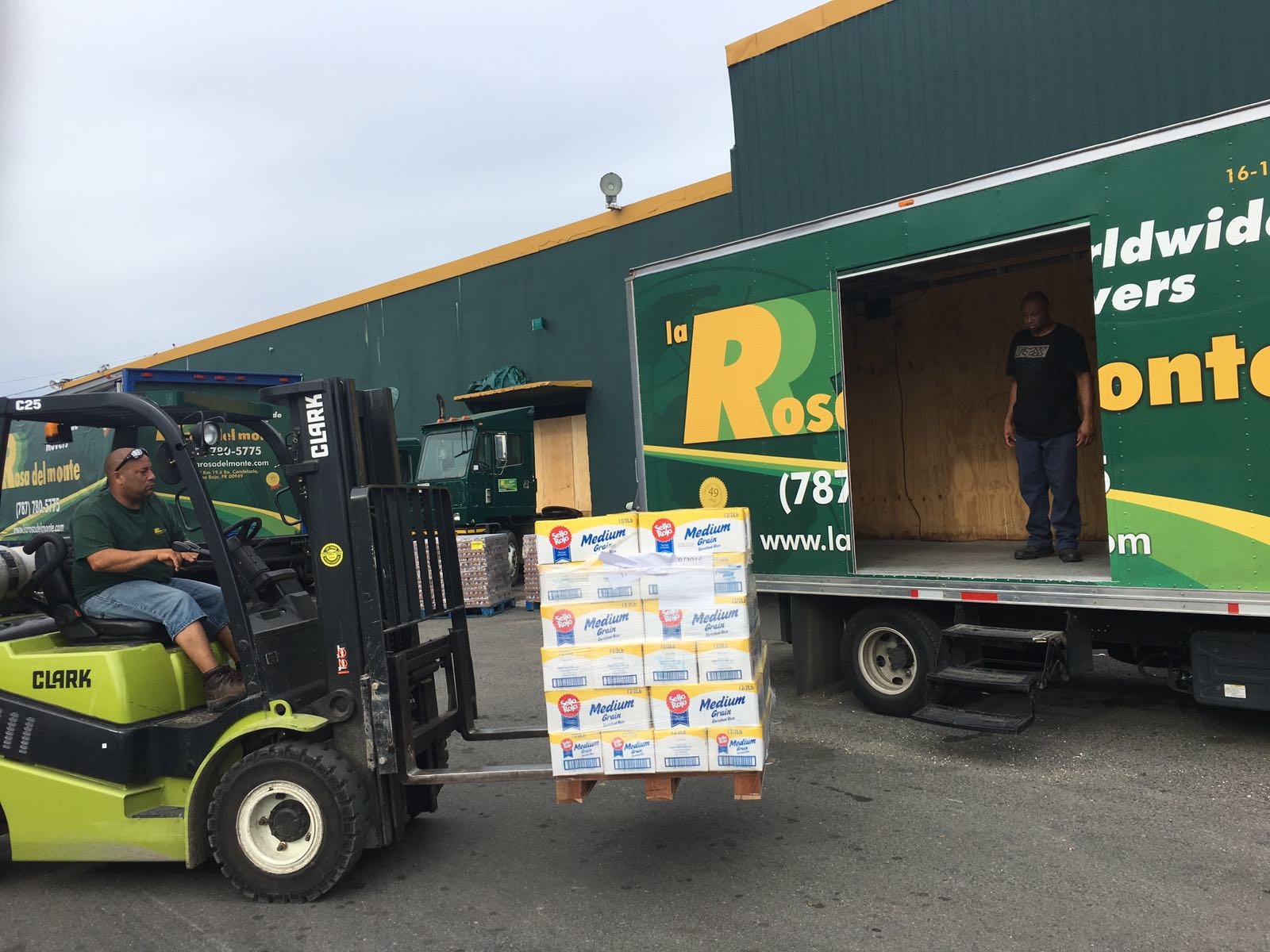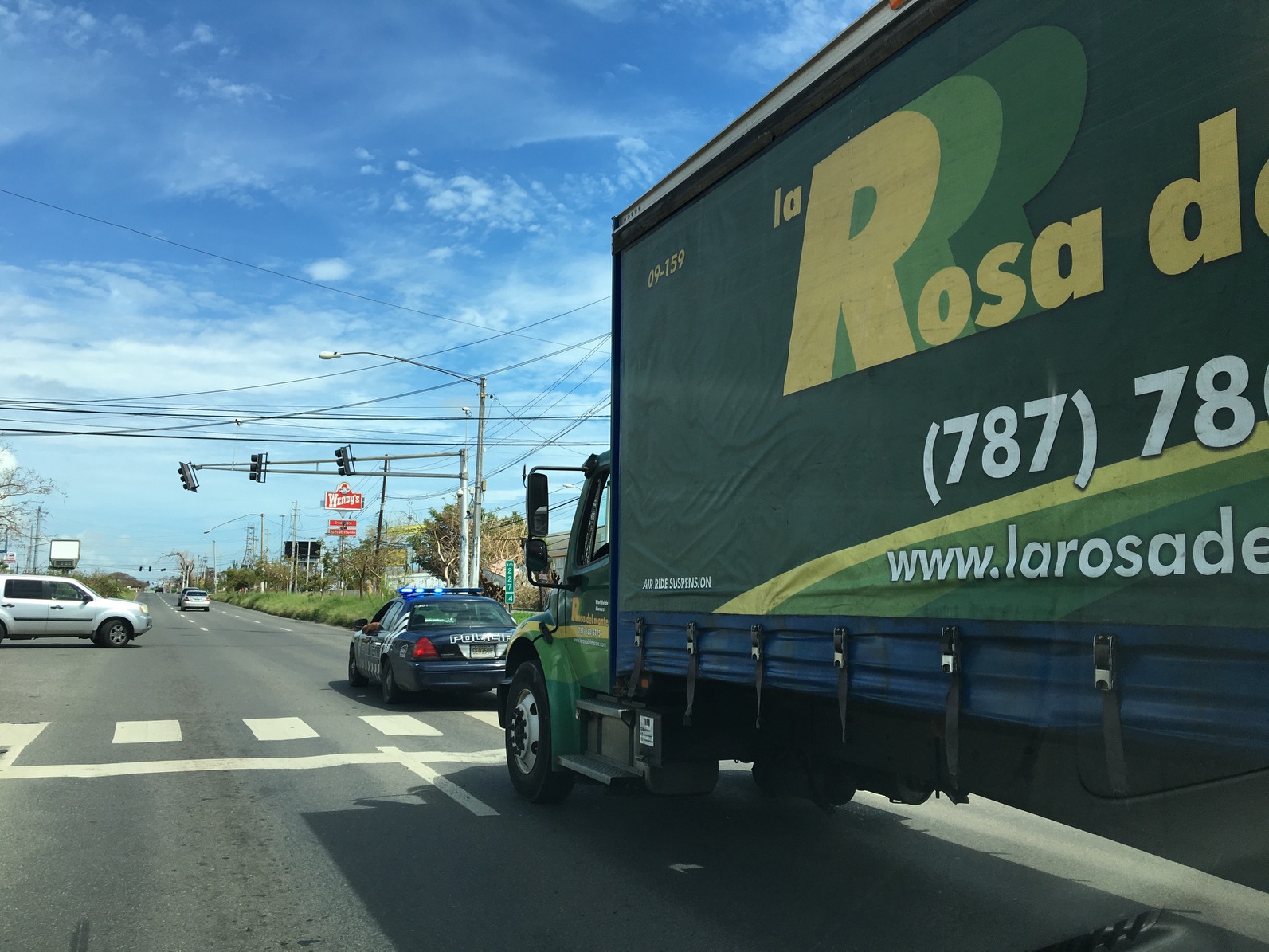Steve Jordan interviews Neftaly Rodriguez from La Rosa Del Monte and Aida Robles from Rodi Cargo, both in Puerto Rico, just three weeks after Maria destroyed their island home

It was on the night of 20 September, 2017 that hurricane Maria hit Puerto Rico. The island was not prepared. Hurricane Irma had passed close only a few days earlier, damaging some power lines and destroying many of the nearby islands; all of Puerto Rico’s resources had been funnelled into helping its neighbours. They had no idea what was coming their way.
Maria started as a tropical depression. By the time it reached Puerto Rico it was a category five hurricane, the biggest and most powerful it’s possible to categorise. “Nobody expected a five!” said Neftaly Rodriguez. “But it was even worse. A category five has winds of 150 mph. In the mountains of Puerto Rico they hit 230 mph. With Irma and Maria we were hit by 2½ hurricanes at the same time.”
Aida Robles was in her second-floor apartment when the storm hit at 1am. She was petrified. The lights went out. She had hurricane-proof windows but knew it was just a matter of time before they exploded. “When the windows go it’s like a vacuum cleaner: it sucks everything out, including people. You have to jump into the bathtub. I’ve been through hurricanes before but nothing like this.” The storm raged for eight hours. Aida’s apartment survived. The apartments above and below did not. “It’s been three weeks now, but I still can’t sleep more than four hours a night.”
Neftaly said that daylight revealed utter devastation. “I put my boots on and went out to start clearing the mess,” he said. “All communities did the same.”
Aida couldn’t leave her property for two days because it was buried in trees and debris. “There were some trees standing, but none had leaves,” she said. “It was the most heart-breaking thing I had ever seen.”
There was no power, no phone signal, very little fuel as the tanks had been contaminated by water and there was no power for the pumps anyway, food was short as many of the shops had been destroyed, water was contaminated, roads had been washed away. The power distribution network had been destroyed too so reconnecting it would be difficult. And there was looting; criminals even stole the copper out of the fallen power lines making repairing the network even more difficult. People were desperate.
“30 of our employees lost everything,” said Neftaly. “We had no communications, so we couldn’t find out if they were still alive. But after a day or so they started showing up for work, some just to let us know they were OK, some looking to do what they could for the relief effort and the company.” Many were still trapped in their homes.
 It was three days before Aida got to her warehouse. The roads were blocked with fallen trees and cables until then. When she arrived the warehouses nearby had been destroyed.
It was three days before Aida got to her warehouse. The roads were blocked with fallen trees and cables until then. When she arrived the warehouses nearby had been destroyed.
Miraculously, her warehouse still stood, its security gates demolished and doors blown out, but upright. “I was very lucky,” she said.
It took Aida six days to contact all her employees to make sure they were OK. Three of them lost their homes completely. Customers could not be contacted. The only fuel was on the other side of the island and the queues were two miles long. Even then you could only get US$20 worth of fuel at a time (about ¼ tank). “Every day we just said, ‘what can we get done today?’. The airport was closed, supplies that did get through had to be unloaded by hand, it was very hot, there were mosquitos, there were many dead animals so there was a risk of disease, no lights, long queues at ATMs to get cash, we were hungry and thirsty and there was a plague of bees because the hives had been destroyed. They were everywhere.”
Neftaly said that the authorities did what they could, but it was very slow. Most of the relief effort was provided privately. Genaro Rodriguez from the La Rosa del Monte office in Miami was contacted by government agencies to help with shipping 50 containers to Puerto Rico from Florida. “They knew we had experience of moving goods to Puerto Rico, so they called us first,” he said. His company had been without power for a week after Irma hit but they were pleased to help. The goods were consigned to FEMA and the Red Cross so, when they arrived, they were stuck in red tape and were not initially getting through to the people.
Aida’s office in Miami has also helped. “They have been great,” she said. “They were able to ship a consignment of generators over for friends and family.”
A week after the storm, Neftaly got a call from his father up in the mountains. He didn’t know he was alive until then. Through his contacts he had secured access to food and water, but had no transport to get it to where it was needed. There were few trucks or drivers available so, at 5.30am, Neftaly took one of his own flatbed trucks and loaded up at the FEMA distribution centre. He drove over the mountains, with a heavily-loaded truck, on almost impassable roads with precipitous, unfenced drops. There was a risk of violence too with vehicles being hijacked for their fuel. Neftaly had a police escort for some of the journey. He got through.
Aida too did what she could for the relief effort. “If I have got trucks and I can help I need to do that,” she said. “I’ll do it until the end. I was blessed because my home and business weren’t destroyed. I will do whatever I can. You can’t say no.”
 But there is also paid work. There are a lot of people who want to leave Puerto Rico, frightened by the devastation and fearful for what might follow. Agencies charged with providing relief are quick to use local companies to provide the logistics. “We are getting some work though government agencies,” said Neftaly. “They hire us to do the transport. They just want to get things done.”
But there is also paid work. There are a lot of people who want to leave Puerto Rico, frightened by the devastation and fearful for what might follow. Agencies charged with providing relief are quick to use local companies to provide the logistics. “We are getting some work though government agencies,” said Neftaly. “They hire us to do the transport. They just want to get things done.”
Three weeks after the storm only 15% of the island had power. The priority is to restore power to hospitals, schools, the city of San Juan and the tourist areas on which so much of the island’s economy depends. Aida said she’s not expecting power back fully for six months. “Puerto Rico was in a financial crisis before the storm, so we will need a lot of help from the US.”
Donald Trump visited. “I don’t know why he came,” said Aida. “He threw paper towels at journalists and told them to clean up the island with them. It was a total waste of time him being there.”
So, as the world moves on to think about new troubles, Puerto Rico licks its wounds and tries to carry on out of the gaze of the world’s media. But just because CNN is not there it doesn’t mean the problem has gone away. People try to rebuild their houses, many without the benefit of insurance and with severe shortages of basic materials such as wood and nails. Companies learn to get by with limited power, no computers, and often just a pen and paper create documents and write invoices. The moving industry meanwhile braces itself for a flood of insurance claims for water, mould and mildew damage that will probably continue for many months.
But is it all bad? Is there anything good that can be salvaged from this tragedy? Aida thinks so. “I probably learned more in the last three weeks than in the last 30 years. I now appreciate more what I have. I don’t waste water or food. I now know my neighbours. We look after each other. We talk to each other again now that there’s no smartphone to distract us. It’s the small things that matter. Material things are not important because they can so easily be taken away.”
Puerto Rico will recover. When FIDI and LACMA have their conferences there next year people will be struck by how normal everything appears. Let us hope so anyway. But when we all live in such an Internet-reliant, social media-obsessed, power hungry, material world, can it really be possible to break free and create a society with different needs and values? Probably not. The genie is out of the bottle and doesn’t know its way back. Similar disasters will happen again, and we will probably be equally unprepared when they do.
36 people were recorded as having died as a direct result of hurricane Maria. “But that doesn’t account for all the people in hospital who died because they had no power or oxygen,” said Neftaly. “The death toll was much higher.” All of Aida and Neftaly’s staff, friends and family survived.
The message from this story, if you have read this far, is that we should not forget Puerto Rico. The island needs help now, even though it’s not in the headlines, will need help for a long time and, unless we can find a way to mitigate our reliance on material things, it will happen again.
www.rodicargo.com
Editor’s note
The Mover tried to get photos from Rodi Cargo as well but the communications were still unable to get through. This clearly illustrates the difficulties the island is having.
Click here to see the next Editor's Pick